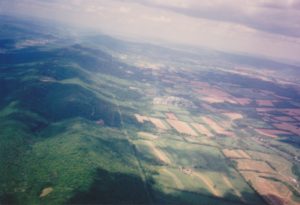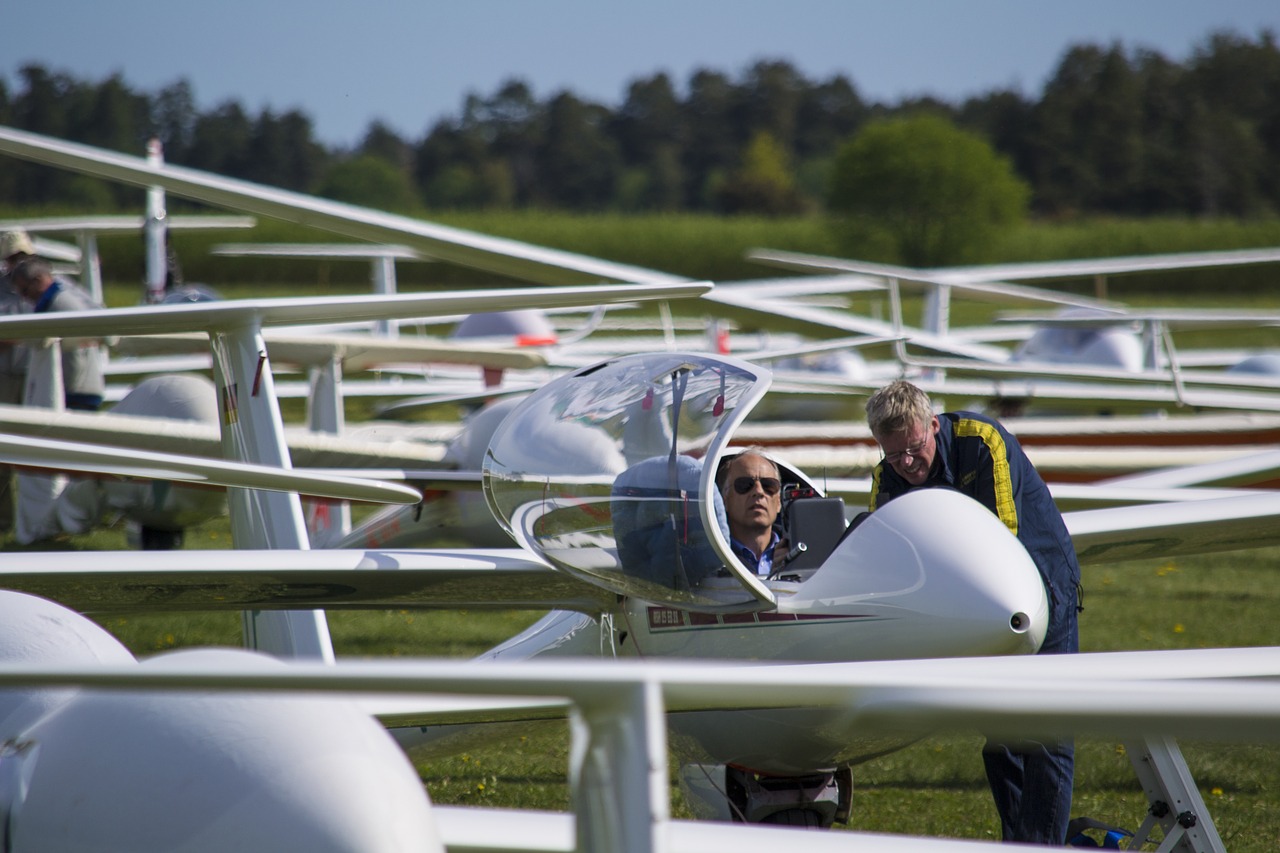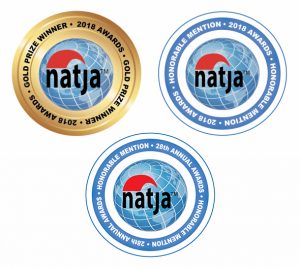When the going gets tough, the tough go traveling!
This is an excerpt from Adventures By Sailplane, about a previous #RoadTrip
B.S. (By Sailplane) B.C. (Before Cancer)
Flying from MASA 1992
It takes more than one person to fly a sailplane. Each time you climb into the cockpit you fly with a host of voices, past and present. Instructors who walked you through the basics. The person who runs your wing. The tow pilot upon whose skills you are dependent to get into the air. The designers of your plane. The people who helped you haul the heavy wings out of the trailer and anchor them to the fuselage. Help received in pushing to the line. The volunteer O.D. (Officer of the Day) who runs the flight line. The pilots you tour the skies with.
It starts with rigging in the morning and it runs through the evening when the planes are safely bedded in their trailers for the night and the pilots swap tales of the day. The stories that we all tell become part of your unconscious flying repertoire.
I know that there is always sink at Harper’s Ferry before I ever see the turn point. I know not to get low over Biglersvile, the fields that look clear are really fledgling orchards which will rip your wings to shreds if you try to land out there. I know that lift tends to form over the ridge, and that the next valley can be utterly absent of lift. I know that I need 3,ooo feet to get over those hills and back to the airport.
I know not to fly over P40, prohibited airspace over nearby Camp David. Howard, an editor for Forbes magazine who flies from MASA, goes to White House functions as a routine part of his job. He tells the tale of being taken aside by the Secret Service one evening. It was obviously a bit disconcerting, and having no idea what was happening, the editor dutifully followed the burly guards off to an area well away from the crowd.
One of the agents reached for a large manilla envelope and slid out a picture.
Of Howard.
In the cockpit of his sailplane.
The picture was so good that you could read the altimeter perfectly. And had there been a GPS in the plane, you could have read Howard’s position: Right over P40/Camp David. The Secret Service agents strongly suggested that Howard learn to stay out of prohibited airspace less some over anxious, young marine use him for target practice. Howard agreed. So it is that we all know to stay out of P40.
Other more frightful tales come to mind. Tales of dipping a wing and cartwheeling down the runway. Wind sheer in the trees on final. Disconnected control rods. Parachute jumps. Landing in the trees. All in one instant all these stories come to mind, and all in an instant they disappear, just a piece of your growing aviation knowledge.
The stories that fly with you. The stories that keep you safe.
Other voices fly with you as well. On the radio, news of good climb in a thermal. General conditions at a turn point. How to soar above a cloud. Reports of wave.
One voice in particular haunted me.
“You’re going to kill yourself,” the instructor warned me. The air had been rough that day, and after I took off, the airport had been closed to any more glider launches. There was a lot of wind and a lot of sink in the air. When I took off, the tow plane had to circle three times before even cresting the ridge.

I hated landing at this particular airport. It was a long, narrow strip at the base of the hill. The springtime frontal passages created winds that whip against the length of the Appalachians. As the air impacts the mountains, it lifts. You can ride the rising air to high altitudes or you can trade lift for daring speed and rush along the contour of the ridge. Either way it can be hazardous flying.
The approach to this particular airfield brought you in directly over the wooded hillside. One of the guys from our club had nearly died here last year when his plane hit sudden and inexplicable sink, and crashed through the trees. Without any power to save him, he watched as the tree trunks passed by his head in the cockpit. Miraculously he survived.
But I not only survived. I greased my landing.
“Have you found a plane yet?” the instructor and owner of the field asked me as I prepared to pay my bill for the day.
“Yes,” and I told him about the plane I had committed to purchasing.
“You are going to kill yourself,” he stated.
The words hit me like a door slamming into my face. I sat down, feeling nearly physically sick. It was as if I had been thrown into a vacuum of doubt, the air pulled from me.
“It’s a dangerous airplane,” the instructor continued.
I tried to breathe.
What had I done? Had I gotten in over my head? I had given my word I would buy the plane. My word was my bond.
“There’s no margin for error in that plane. I’d rather see you in something easier to fly,” he explained, as if concerned. Concerned that he had misjudged my seriousness about flying and missed a sale.
I nodded dumbly. I was speechless. From the pit of my stomach a queasiness started to grow. Was the path I had set out on a dead end? Life wish, death wish. Were they perhaps too close for comfort?
I walked over to the soda machine and steadied myself. Breathe, breathe, I thought. I pushed the button for a Coke. The sugar, the caffeine tasted so good, so sweet, so alive.
I sucked sustenance from the can.
I leaned myself against the wall of the building, breathing. Just breathing.
I want to go home, I thought. All the confidence I’d worked so hard to build was gone. I have no idea what I am going to do.
I looked up at the ridge which just earlier had been a source of my pride and ability as I rode the air along it, and now it appeared dark and sinister in the dusk.
Perhaps I have been fooling myself, I thought. I can’t fly like these guys.
Can I fly at all?
I wandered, staggered over to my car, conscious of my breathing, of the pain of being alive at all. A feeling of empty, gnawing fear grew in my stomach.
“Care to join us for dinner?” I looked up. A car containing three other pilots who had also been flying that day beckoned me to join them. Normally I would have. I love the talk that emerges around the field at the end of the day.
But not today.
And they pulled out of the parking lot, no doubt to to tell their tales of daring-do along the ridgeline. I pulled out with my tail tucked firmly between my legs.
The drive home is a pretty one, though I saw nothing of the road or the country. I felt only fear and disbelief. Terrible fear, with all my hopes dashed. I crawled into the safety of my garage and listened to the sound of the garage door close behind me. Two steps through the laundry room, into the kitchen. The answering machine flashes its welcome.
“I hear you flew the ridge today. Call me as soon as you get home.” The machine beeps.
I do not want to talk to anyone. Next message.
“That guy is an asshole. Call me when you get in.” Another pilot. Word travels fast.
“You don’t know me, but I flew the ridge with you today. We asked you to join us for dinner. What happened to you today was terrible. That guy is way out of line. If you’d like to talk about it, give me a call.” And the unknown voice, who has somehow found my unlisted phone number, leaves his name and number.
One of the great difficulties and blessings of soaring is that it is a small world. And here, not four hours after leaving the airfield where my soaring career nearly ended, I have messages from three pilots in three different states. I appreciate the concern, but I really don’t want to talk to anyone. But that is not an option.
The phone rings and I answer it. Another pilot. I recount the day’s events.
“Are you all right?”
“I’m ok. A bit shaken, but ok.”
“He does this to everyone, you know.”
“Really?”
Tell me more.
Tell me more because I need to know. I need to know that this isn’t about me, that it is about him, about his insecurities, not my inabilities. I need to know that I do indeed know how to fly. I need to know because I need to be able to muster the courage to fly again. And I’m not sure I can. I listen for everything I am worth, but I am not convinced.
***
“Don’t worry, he does this to everyone, ” Dave told me. “You should see what he did to me one year at a CFI re-certification course.”
But the edge had been taken off my delight of a new plane.
My plane, Whiskey Oscar, is a 15 meter sailplane. Gleaming white, with a spread of forest green stripes on her tail. Tail feathers. And a large WO under her wing.

Whiskey Oscar
She has a wingspan of nearly 50 feet from wingtip to wingtip. And flaps. Flap settings that ranged from negative 11 degrees (warp drive) to 44 degrees (which meant you were looking over your toes to land). Retractable gear and a cg hook. A cg hook, or center of gravity hook, just means that the glider is towed from a hook on it’s belly, near the main wheel, rather than from the nose.
What ever motivated me to buy such an airplane? I think I must have been slightly out of my mind, just as I was slightly out of my mind when I decided to start flying. If I had know what I had gotten myself into perhaps I would have taken a different route. If I had driven away the first fateful day at MASA, surely things would have turned out differently. If…
But I bought the plane and now I set about learning to fly her.
The biggest variables were the rapid acceleration of the ship compared to anything else I had flown and the fact that it had flaps. Flapped ships use their flaps, rather than just the elevator, to control their attitude and speed.
In the air, moving the ship’s flaps full negative is akin to engaging warp drive. All at once, without any indication of movement, the plane seems to part the sky before it and skim through the opening, swift and silent. I had never flown a flapped ship before, but today, this perfect windless day I would take to the air in my airplane. I was excited, but even beyond that, I was terrified.
Takeoff with a flapped ship would be decidedly different. By slowly, gently, perfectly easing the flap setting from full negative to back to a neutral setting, the air foil changes and the ship is lifted off the ground. One of the pilots at another club, a professional pilot with thousands of hours and the respect of everyone, misjudged the transition between settings once, dropped a wing, and cartwheeled his ship down the runway on takeoff. I decide to err well on the conservative side, and to take off in my new plane as if it were a standard class ship, at least to start. I leave the flaps in a neutral setting and lift off with stick and rudder.
There is great debate about whether or not leaving the dive brakes cracked helps gain aileron control earlier in the take off roll. Some argue it does. Some argue it’s dangerous and that failing to lock your dive brakes can cause an accident. All true. But at MASA, the runway slopes downhill, so whoever you fall in this debate, you will need your dive brakes opened and brake engaged in order to just stay on the runway. If not, you will roll over the tow rope and your cg hook will back release.
I will take off with my dive brakes open.
I look at this beautiful plane. How did I get myself into this? I hadn’t really thought this through. I don’t think that I can do this. I am terrified. I am in over my head.
The voice was right, I am going to die.
I push up to the line. Fifty feet of wingspan rolls gracefully along. The pointed white nose of the plane looks ready to take to the air. But my parachute is heavy on my back. I feel the weight of the pack, the weight of the voices, the weight of my own fear bearing down on me.
I pause. This is my last chance to just walk away. I don’t have to do this. Once I am in the plane, there is no going back. I breathe. It takes every ounce of courage I possess, but I push through an almost tangible portal of fear and I settle myself into the cockpit.
Nothing feels right. I sit nearly reclined, and it is hard to see over the instrument panel. The Navy test pilot puts some foam behind my back, and my position improves. Whiskey Oscar feels awkward to me. But actually I am the awkward one.
Controls.
Ballast.
Straps. Fastened and tight.
Instruments. I set my altimeter to zero for ease. Today I will return to my home field and not having to do the mental arithmetic in the pattern is one less thing to worry about.
Trim. I unscrew the little green knob and set it in place.
Canopy down and latched. One hook and then the other. I push up on the rails to test it, to be sure it is indeed locked in place.
One last look. I sit alone in the strange cockpit and in the pit of my stomach I feel ill at ease. I try to swallow my fear, to keep it at bay.
Ready.
The Officer of the Day directing the launch knows this is my first flight, and he holds everything waiting for any breeze to die down. He stacks the odds in my favor. All the other pilots stop what they are doing to watch.
I swallow hard.
Fools and idiots. I am both. God, please lend me the grace of student pilots.
Soaring is an amazing thing. You may not be religious when you start, but you will find yourself praying to all sorts of entities after not very long. To a traditional source of spiritual inspiration. To the Sky Gods, not your fellow pilots, but those forces that be, those forces that keep you aloft. You will pray to your instruments, your airplane, to a landable field. On rare occasion to your parachute. Soaring works wonders for your spirituality.
I look at the windsock hanging limp on its stand. I am ready. A high tow. A very high tow for my first flight.
Thumbs up. I give the signal with my hand while my stomach pleads to remain rooted to the ground.
The tow plane waggles its rudder, indicating it is ready to go. I do the same, even though I am not ready. But I will never be ready. If I am going to do this, I am going to do this here and now.
The tow plane’s throttle opens, and I start to roll down the runway. I veer off a bit to one side, but I stay more or less behind the plane in front. A bit of a drop of my left wing at first, but I get it up and I don’t PIO. (A PIO is a pilot induced oscillation where the pilot overcorrects and weaves first up, then down, on tow. The oscillations magnify and can be very dangerous. I tried it once and decided I didn’t like it at all!)
Up, up, let’s just get up in the air. This precarious no man’s land barreling down the runway without enough speed to fly is not where I want to be. This new plane is pulled form the cg hook, not its nose. Any directional stability is provided by me. I have flown planes with a cg hook before, but today the entire fuselage seems to perch ever so precariously from that one point. I stay with the plane, flying it from the very first moment of movement. Keep the wings level, keep the fifty feet of endless wings level, and the plane down the center of the runway. Everything is so awkward from this reclined position and the pavement rushes by just beneath my seat.
Somehow I manage to take off. Up, up we climb. We climb over the trees at the end of the runway. Don’t let the rope break. I am terrified. I am flying, but I am terrified. How did I get myself into this?
It is truly silent. I have never flown a plane like this before. So still, so smooth.
I keep the yaw string straight. I bank with the tow plane in front of me, carefully following the arc of its outside wing.
I sense my parachute. I feel its weight on my back, its straps over my shoulders. How will I ever get this back on the ground? Maybe I should just jump. Maybe that is the safer route. Just pop the canopy and bail out.
I glance at the orange canopy release handle. No, don’t touch that. Not yet. I keep my hand away from the temptation of the release, and I decide to hang on to the plane, at least for now. But I keep all my options open as I mentally rehearse possible exit strategies with a twenty pound shute hanging on my back. I have never made a parachute jump. How high do I need to be to bail out of this?
“You are going to kill yourself.” I keep hearing those words.
If I jump now, maybe I can just bounce off the trees.
“Altitude is your friend.”-Pithy Pilot Sayings
But I hang on, my hand wrapped tightly around the stick and I follow the tow plane to 5,000 feet. Altitude is my friend. This is it. I clear my turn and I pull the tow line release. The yellow rope snakes away in the sky, down, back to earth with the tow plane. I bank to the right, alone in the sky.
It is sooo quiet. Not a sound. I sit perched in my cockpit, riding on air.
Nothing could have prepared me for this experience.
Endless long white wings stretch out and ride the air on either side of me. They flex and bounce with the movement of the sky, as if to flap in delight at being airborne. Nestled between them in my little cocoon of a cockpit I sit, with only the thin shell of the ship between me and the ground thousands of feet below.
I take to the task of learning to fly my plane. Dave tells me to look out as soon as I get off tow. This plane moves fast, he warns and you’ll lose your bearings.
He is right. This plane really moves. I transition through the flap settings to see what will happen.
“You fly it with flaps,” I am told and I try to understand just what that means. So much of the talk at the airfield seems to be in some abbreviated form, like a foreign language. It is so hard for me to get the information I need, in a manner I can understand. I just keep moving ahead, learning as I go, and hoping I will be able to figure it all out.
Here on my maiden flight, I try to make sense of the things I have been told. In negative flaps, I am traveling close to 100mph, nowhere near red line at 165 but I am screaming silently, swiftly through the air. I have never experienced anything like this. Life wish, death wish. It is totally exhilarating and terrifying all at once.
“Ever spin a 20?” the navel test pilot asks. He laughs. “Most frightening thing I’ve ever done.”
He pauses for effect.
“First it enters sorta slowly,” he says in the drawl that all military pilots seem to have, “and the first rotation’s not too bad. But then it really whips around. Ya gotta be careful to have your flaps full negative, or you’ll rip the wings off.”
He is bent over, as if to simulate his position looking at the earth. He flings his arms dramatically back, to demonstrate the effect of wings pulling off an aircraft.
“Then ya go to recover, and it tucks. Ya dangle upside down in your straps and get a canopy full of earth.”
By now he is dangling in half from his waist, his head tucked, staring at the ground with his eyes large and round, his hands grasping an imaginary stick in total terror. He looks up at me.
“Then it pulls out.” He smiles somewhat maliciously.
“Best ride I ever had.”
Another pilot tells the same story of spinning his 20. “For the first time, I understand why people spin in. I took every it of courage I had to push that stick forward. Then it tucks.”
I fly level and carefully. Today I think I’ll just avoid a spin. I stick to approaches to turning stalls and a very, very gentle stall. I practice banking and turning in a coordinated fashion. I try to find lift and to climb.
Here I am at 5,000 feet. Terrified in my new plane. Did I say I like adventure? I take it back. I don’t want any more adventure. I want to get down safely. How am I ever going to land this thing?
“Flying is the second greatest thrill known to man. Landing is the first. -Pithy Pilot Sayings”
The air is silent, except for the pounding of my heart. No wind, no noise no sensation of speed. Just the feel of the air under me, over me, surrounding me. Just the feel of these strange controls. Just the feel of movement as the plane banks and turns, carrying me with it.
It is effortless to stay aloft. But after an hour, I am tired of the effort needed to learn to fly. My first flight should be a short one, a familiarization flight. Time to think about landing.
Landing I have retractable gear (which way was down?), six flap settings and fifty feet of wing to contend with. What if a crosswind has picked up? What if there is sheer through the trees. Perhaps I can still jump. Surely three thousand get is enough altitude for me to get out safely. My parachute sits still on my back, the orange canopy release handle taunts me. Here, pull here, it beckons.
Instead I look at the landing checklist. UFSTALL. Undercarriage, flaps, speed, trim, altitude, look out, land. One of the guys at the airfield adds another item to his landing list. UFFSTALL. The F comes into play when you verbally run through it. You FUCKING Stall and You Die. It’s a bit vulgar, but it does get your attention. I add it to my checklist too.
I crack my dive brakes to bleed off altitude. It takes time. This plane really flies. Only at the time, I am too inexperienced to know that. I just know that I have to land.
I run through my checklist. “Don’t let the airspeed get away from you, ” I had been warned. Procedures help me to focus. Undercarriage, down. Flaps, set. Speed. Stay on top of the speed. Don’t let it get away from you.
Trim.
Altitude, no traffic in the pattern. Looking, looking. No wind. Thank God there is no wind.
You fucking stall and you die.
This is it. No second chances, no go arounds. I maintain my glide path and I descend, down, down. I don’t see the trees underneath me, I do not see the grass. I barely see through my own inexperience and fear. I thud onto the ground. Landing and a half. But I walk away.
“Any landing you walk away from is a good one.” -Pithy Pilot Sayings
And now I start to fly with a new voice, my voice.
You fly with weather, past, present and future. You fly with the terrain, with the wind, with the birds and the clouds. Most of all, you fly with yourself.
I learn many things about myself flying sailplanes. I learn that I have courage. I am smart and I am stupid. I have a good sense of direction , but I am navigationally impaired. I learn that I have a tendency to push too hard, sometimes beyond my abilities. I progress, but I take risks. I need to take careful ones, not careless ones. Sometimes I am careless. Sometimes I am lucky. On occasion, I am skillful.
I learn about trust. I learn to trust the day, to trust the weather and to trust that I have the skills to navigate the sky. I learn flexibility, as I adjust to changing conditions, sometimes holding back, sometimes pushing forward sooner than I had anticipated. I learn awareness of my environment. Patience. I watch the day unfold and cycle, the clouds as they build then exhaust themselves. I look to the birds for guidance.
I feel so extraordinarily alive in the sky. With each moment in the air, with each decision I make, I am fully present in the moment and acutely aware of my surroundings. It is such a gift, to be able to soar. For me, it is truly a gift and the love of a new life.
Like This Post? Pin It!

Next Post:Pennsylvania to Indiana 1995
If you’re interested in learning more about photography (or cooking or film or any number of topics) check out Masterclass for on-line excellence:
[et_bloom_inline optin_id=”optin_10″]
What is #CancerRoadTrip and how did it come to be? Read this post to get the backstory!
Follow me on Twitter, Pinterest, Instagram, and at Anti-Cancer Club. Connect with me! I may need a place or two to stay along the way!









